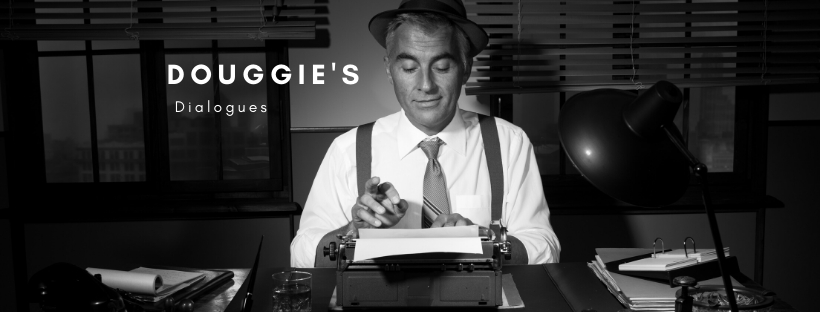Radio... The original podcast
- The Drama Merchant
- Jan 3, 2020
- 4 min read

It is predicted that next year more than one billion people worldwide will listen to one or more podcasts.Once people used reading and writing as their primary source of communication, but nowadays listening and watching are all the rage.

Once people used reading and writing as their primary source of communication, but nowadays listening and watching are all the rage. Indeed we have been watching – film and TV – for decades, but now listening is becoming fashionable as the cyber world offers a smorgasbord of audio entertainments.
The media is catching onto the ‘new’ fashion with soundtracks of true crime stories, comedy shows, political and social debate and special interest subjects on a range of topics.
The flood gates have opened. But ironically drama – which was once the backbone of radio broadcasting before video (alias television) killed the radio star – still appears to be in its renaissance infancy.

In the 1920s, ‘30s, ‘40s and even ‘50s, sitting around the radio – or wireless as some called it – to take in a popular series, children’s drama, crime show or horror story as well as comedy and variety programs was a family ritual.
Now the Drama Merchant – aka Nathan Schulz – is bringing back the audio experience in the guise of the Radio Play Hour.

However, Nathan is giving his Radioplay Hour shows a visual dimension by playing to a live audience and using some props, costumes & improv to create a mixed media effect.
But the bottom line is the radio experience, which means audiences can literally close their eyes and create a world of imagination, which dates back to the ancients.
Ironically, the playwright and philosophy Seneca (4 BC-AD65) is billed as the pioneer of radio-style drama as his works were presented by readers rather than plays performed by actors. The basic principal of radio drama is to tap into the audience’s ‘psychological dimension’ with the use of dialogue, music and sound effects to create characters and tell the story. That means each individual in the radio drama audience can create their own version of the work being broadcast, which in turn makes for multiple unique experiences.
On the technology front the Radio Play began its journey into the 20th century in 1881 when French engineer Clement Ader took out a patent for telephone equipment to be used in the theatre. But the medium didn’t begin to crank up until 1921 when actors Grace George and Herbert Hayes broadcast the first full length play from a station in San Francisco.
During the decade the number of shows and programs gracing the air waves began to steadily increase into radio drama hit its full stride in the 1930s. The two major homes for radio drama were the US and Britain where some of the greatest creatives of that generation found a voice on radio. Before long more plays – original and adaptations – were being broadcast than opening at theatres in the two countries.
The commercially driven Americans were passionate about adapting their biggest box office movies for broadcast, often using the original big screen stars to recreate their roles for radio. In Britain among the most popular radio dramas of the era were originally radio plays from the pens of literary giants such as T.S. Eliot and Dylan Thomas.
In the 1930s American born poet Eliot’s verse play Murder in The Cathedral was adapted for radio to much acclaim. The work tells the story of the assassination of Archbishop Thomas Bechet in Canterbury Cathedral during the reign of Henry II in 1170. Then in the 1950s Welsh poet Dylan Thomas scored a radio bullseye with his masterpiece written for voices Under Milk Wood.

In American it was Orson Welles, who, with his Mercury Theatre on Air team, created the most famous or infamous radio play. On October 30, 1938, Welles and co broadcast a radio adaptation of H. G. Wells’ The War of the Worlds. The production was presented as a genuine live broadcast and was so realistic that many, who missed the opening disclaimer, believe it was a real Martian invasion.
The radio event became known as the night that panicked America.
During 2020 the Drama Merchant will be presenting plays from the golden era of Radio Drama which will be complimented by informative articles on The Drama Merchant's blog and also in the Merchant Post.
Written by
- D. A. Kennedy.
#retro #audio #storytelling #imagination #radioplay #podcast #blog #goldcoastarts #over55entertainment #entertainmentforvisuallyimpaired
About D.A. Kennedy:
Doug has been writing, and talking, about theatre and the arts on the Gold Coast and south-east Queensland for nearly four decades. For nearly a quarter of a century he has written reviews, interviews and opinion pieces for the mainstream media and later popped up on radio. During a stint in Brisbane he was a theatre reviewer for 612 ABC radio and since relocating to the Coast he still contributes theatre reviews to various on-line outlets.
Doug is an active participant of "The Radioplay hour"
.png)






Comments